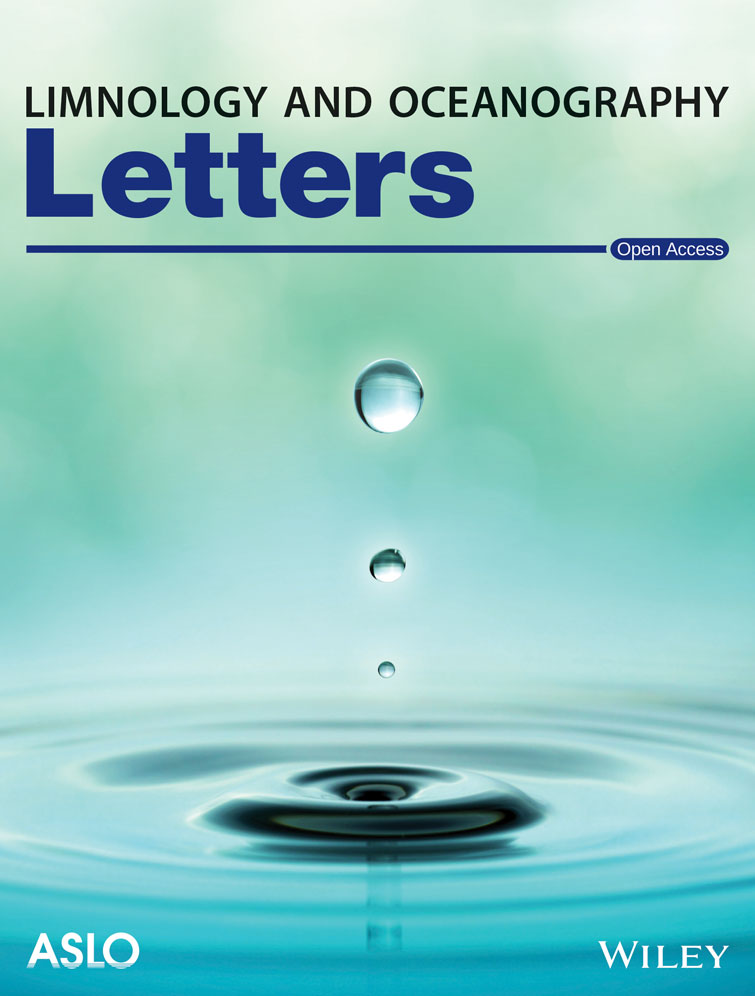Century‐scale resilience of stored seagrass blue carbon
IF 5
2区 地球科学
Q1 LIMNOLOGY
引用次数: 0
Abstract
Blue carbon sequestration in coastal ecosystems is only relevant to climate change mitigation and carbon offset crediting if the carbon is taken out of circulation for at least a century. Here, we examined sediment cores, up to 2.2 m deep, collected in modern储存海草蓝碳的世纪尺度弹性
沿海生态系统中的蓝色碳固存只有在碳从循环中消失至少一个世纪的情况下,才与气候变化缓解和碳抵消信贷有关。在这里,我们检查了沉积物岩心,深度达2.2米,收集于美国弗吉尼亚州中大西洋泻湖的现代Zostera marina海草草甸。海草曾在这里广泛生长,直到1933年因疾病导致区域灭绝。65年后的1998年,在这里发现了一小块天然种子海草,并推动了大规模的海草恢复工程,目前覆盖面积超过40平方公里。210Pb和14C定年、沉积物有机质和碳含量、稳定同位素和DNA分析的综合数据显示,尽管海草消失了几十年,但大部分海草有机碳持续存在了几个世纪。在某些情况下,这种遗留的蓝碳是恢复的海草草甸沉积物中埋藏的两倍。
本文章由计算机程序翻译,如有差异,请以英文原文为准。
求助全文
约1分钟内获得全文
求助全文
来源期刊

Limnology and Oceanography Letters
Multiple-
CiteScore
10.00
自引率
3.80%
发文量
63
审稿时长
25 weeks
期刊介绍:
Limnology and Oceanography Letters (LO-Letters) serves as a platform for communicating the latest innovative and trend-setting research in the aquatic sciences. Manuscripts submitted to LO-Letters are expected to present high-impact, cutting-edge results, discoveries, or conceptual developments across all areas of limnology and oceanography, including their integration. Selection criteria for manuscripts include their broad relevance to the field, strong empirical and conceptual foundations, succinct and elegant conclusions, and potential to advance knowledge in aquatic sciences.
 求助内容:
求助内容: 应助结果提醒方式:
应助结果提醒方式:


